Effects of Groundwater Table Decline on Vegetation in Groundwater-Dependent Ecosystems
Abstract
:1. Introduction
2. Study Area and Data
2.1. Study Area
2.2. Dates
2.2.1. GRACE and the Global Land Data Assimilation System (GLDAS)
2.2.2. Remote Sensing Data
2.3. Methods
2.3.1. Groundwater Calculation
2.3.2. Identification and Validation of GDEs
3. Result
3.1. Delineation of the Drought Period
3.2. Identification of Potential GDE Regions
3.3. Validation of Potential GDEs
4. Discussion
4.1. Changes in the Potential GDEs in the Loess Areas
4.2. Uncertainty Analysis of GDEs
5. Conclusions
Author Contributions
Funding
Data Availability Statement
Conflicts of Interest
References
- Mishra, A.K.; Singh, V.P. A Review of Drought Concepts. J. Hydrol. 2010, 391, 202–216. [Google Scholar] [CrossRef]
- Aeschbach-Hertig, W.; Gleeson, T. Regional Strategies for the Accelerating Global Problem of Groundwater Depletion. Nat. Geosci. 2012, 5, 853–861. [Google Scholar] [CrossRef]
- Famiglietti, J.S. The Global Groundwater Crisis. Nat. Clim. Change 2014, 4, 945–948. [Google Scholar] [CrossRef]
- Groves, D.G.; Molina-Perez, E.; Bloom, E.; Fischbach, J.R. Robust Decision Making (RDM): Application to Water Planning and Climate Policy. In Decision Making under Deep Uncertainty; Marchau, V.A.W.J., Walker, W.E., Bloemen, P.J.T.M., Popper, S.W., Eds.; Springer International Publishing: Cham, Switzerland, 2019; pp. 135–163. ISBN 978-3-030-05251-5. [Google Scholar]
- Kath, J.; Boulton, A.J.; Harrison, E.T.; Dyer, F.J. A Conceptual Framework for Ecological Responses to Groundwater Regime Alteration (FERGRA): Ecological Responses to Altered Groundwater Regimes. Ecohydrology 2018, 11, e2010. [Google Scholar] [CrossRef]
- Barlow, P.M.; Leake, S.A. Streamflow Depletion by Wells—Understanding and Managing the Effects of Groundwater Pumping on Streamflow; Circular; U.S. Geological Survey: Reston, VA, USA, 2012; Volume 1376, p. 95. [Google Scholar]
- Alley, W.M.; Leake, S.A. The Journey from Safe Yield to Sustainability. Groundwater 2004, 42, 12–16. [Google Scholar] [CrossRef] [PubMed]
- Rudestam, K.; Langridge, R. Sustainable Yield in Theory and Practice: Bridging Scientific and Mainstream Vernacular. Groundwater 2014, 52 (Suppl. S1), 90–99. [Google Scholar] [CrossRef] [PubMed]
- Gungle, B.; Callegary, J.; Paretti, N.; Kennedy, J.; Eastoe, C.; Turner, D.; Dickinson, J.; Levick, L.; Sugg, Z. Hydrological Conditions and Evaluation of Sustainable Groundwater Use in the Sierra Vista Subwatershed, Upper San Pedro Basin, Southeastern Arizona; U.S. Geological Survey: Reston, VA, USA, 2016. [Google Scholar]
- Rohde, M.M.; Froend, R.; Howard, J. A Global Synthesis of Managing Groundwater Dependent Ecosystems Under Sustainable Groundwater Policy. Groundwater 2017, 55, 293–301. [Google Scholar] [CrossRef] [PubMed]
- Griebler, C.; Avramov, M.; Hose, G. Groundwater Ecosystems and Their Services: Current Status and Potential Risks. In Atlas of Ecosystem Services: Drivers, Risks, and Societal Responses; Schröter, M., Bonn, A., Klotz, S., Seppelt, R., Baessler, C., Eds.; Springer International Publishing: Cham, Switzerland, 2019; pp. 197–203. ISBN 978-3-319-96229-0. [Google Scholar]
- Aldous, A.; Bach, L. Protecting Groundwater- Dependent Ecosystems: Gaps and Opportunities. Natl. Wetl. Newsl. 2011, 33, 19–22. [Google Scholar]
- Kløve, B.; Ala-aho, P.; Bertrand, G.; Boukalova, Z.; Ertürk, A.; Goldscheider, N.; Ilmonen, J.; Karakaya, N.; Kupfersberger, H.; Kvœrner, J.; et al. Groundwater Dependent Ecosystems. Part I: Hydroecological Status and Trends. Environ. Sci. Policy 2011, 14, 770–781. [Google Scholar] [CrossRef]
- Murray, B.R.; Hose, G.C.; Eamus, D.; Licari, D. Valuation of Groundwater-Dependent Ecosystems: A Functional Methodology Incorporating Ecosystem Services. Aust. J. Bot. 2006, 54, 221–229. [Google Scholar] [CrossRef]
- Orellana, F.; Verma, P.; Loheide, S.P., II; Daly, E. Monitoring and Modeling Water-Vegetation Interactions in Groundwater-Dependent Ecosystems. Rev. Geophys. 2012, 50. [Google Scholar] [CrossRef]
- Gou, S.; Gonzales, S.; Miller, G.R. Mapping Potential Groundwater-Dependent Ecosystems for Sustainable Management. Groundwater 2015, 53, 99–110. [Google Scholar] [CrossRef] [PubMed]
- Duran-Llacer, I.; Arumí, J.L.; Arriagada, L.; Aguayo, M.; Rojas, O.; González-Rodríguez, L.; Rodríguez-López, L.; Martínez-Retureta, R.; Oyarzún, R.; Singh, S.K. A New Method to Map Groundwater-Dependent Ecosystem Zones in Semi-Arid Environments: A Case Study in Chile. Sci. Total Environ. 2022, 816, 151528. [Google Scholar] [CrossRef] [PubMed]
- He, P.; Xu, L.; Liu, Z.; Jing, Y.; Zhu, W. Dynamics of NDVI and Its Influencing Factors in the Chinese Loess Plateau during 2002–2018. Reg. Sustain. 2021, 2, 36–46. [Google Scholar] [CrossRef]
- Feng, X.; Fu, B.; Piao, S.; Wang, S.; Ciais, P.; Zeng, Z.; Lü, Y.; Zeng, Y.; Li, Y.; Jiang, X.; et al. Revegetation in China’s Loess Plateau Is Approaching Sustainable Water Resource Limits. Nat. Clim. Change 2016, 6, 1019–1022. [Google Scholar] [CrossRef]
- Canham, C.A.; Froend, R.H.; Stock, W.D. Rapid Root Elongation by Phreatophyte Seedlings Does Not Imply Tolerance of Water Table Decline. Trees 2015, 29, 815–824. [Google Scholar] [CrossRef]
- Tapley, B.D.; Bettadpur, S.; Watkins, M.; Reigber, C. The Gravity Recovery and Climate Experiment: Mission Overview and Early Results. Geophys. Res. Lett. 2004, 31, L09607. [Google Scholar] [CrossRef]
- Yang, F.; Feng, Z.; Wang, H.; Dai, X.; Fu, X. Deep Soil Water Extraction Helps to Drought Avoidance but Shallow Soil Water Uptake during Dry Season Controls the Inter-Annual Variation in Tree Growth in Four Subtropical Plantations. Agric. For. Meteorol. 2017, 234–235, 106–114. [Google Scholar] [CrossRef]
- Feng, W.; Zhong, M.; Lemoine, J.-M.; Biancale, R.; Hsu, H.-T.; Xia, J. Evaluation of Groundwater Depletion in North China Using the Gravity Recovery and Climate Experiment (GRACE) Data and Ground-Based Measurements. Water Resour. Res. 2013, 49, 2110–2118. [Google Scholar] [CrossRef]
- Han, Z.; Huang, S.; Huang, Q.; Leng, G.; Wang, H.; Bai, Q.; Zhao, J.; Ma, L.; Wang, L.; Du, M. Propagation Dynamics from Meteorological to Groundwater Drought and Their Possible Influence Factors. J. Hydrol. 2019, 578, 124102. [Google Scholar] [CrossRef]
- Zhao, M.; Geruo, A.; Velicogna, I.; Kimball, J.S. A Global Gridded Dataset of GRACE Drought Severity Index for 2002–14: Comparison with PDSI and SPEI and a Case Study of the Australia Millennium Drought. J. Hydrometeorol. 2017, 18, 2117–2129. [Google Scholar] [CrossRef]
- Yang, Z.; Bai, P.; Li, Y. Quantifying the Effect of Vegetation Greening on Evapotranspiration and Its Components on the Loess Plateau. J. Hydrol. 2022, 613, 128446. [Google Scholar] [CrossRef]
- Li, P.; Chen, J.; Zhao, G.; Holden, J.; Liu, B.; Chan, F.K.S.; Hu, J.; Wu, P.; Mu, X. Determining the Drivers and Rates of Soil Erosion on the Loess Plateau since 1901. Sci. Total Environ. 2022, 823, 153674. [Google Scholar] [CrossRef] [PubMed]
- Chen, J.L.; Rodell, M.; Wilson, C.R.; Famiglietti, J.S. Low Degree Spherical Harmonic Influences on Gravity Recovery and Climate Experiment (GRACE) Water Storage Estimates: Low Degree Spherical Harmonic Influences. Geophys. Res. Lett. 2005, 32, L14405. [Google Scholar] [CrossRef]
- Swenson, S.; Wahr, J. Methods for Inferring Regional Surface-Mass Anomalies from Gravity Recovery and Climate Experiment (GRACE) Measurements of Time-Variable Gravity: Methods for Grace Surface Mass Recovery. J. Geophys. Res. 2002, 107, ETG 3-1–ETG 3-13 . [Google Scholar] [CrossRef]
- Swenson, S.; Wahr, J. Post-Processing Removal of Correlated Errors in GRACE Data. Geophys. Res. Lett. 2006, 33, L08402. [Google Scholar] [CrossRef]
- Yang, J.; Huang, X. The 30 m Annual Land Cover Dataset and Its Dynamics in China from 1990 to 2019. Earth Syst. Sci. Data 2021, 13, 3907–3925. [Google Scholar] [CrossRef]
- Prakash, S. Performance Assessment of CHIRPS, MSWEP, SM2RAIN-CCI, and TMPA Precipitation Products across India. J. Hydrol. 2019, 571, 50–59. [Google Scholar] [CrossRef]
- Van der Schrier, G.; Barichivich, J.; Briffa, K.R.; Jones, P.D. A scPDSI-Based Global Data Set of Dry and Wet Spells for 1901–2009. J. Geophys. Res. Atmos. 2013, 118, 4025–4048. [Google Scholar] [CrossRef]
- Zhang, B.; Wu, P.; Zhao, X.; Gao, X.; Shi, Y. Assessing the Spatial and Temporal Variation of the Rainwater Harvesting Potential (1971–2010) on the Chinese Loess Plateau Using the VIC Model. Hydrol. Process. 2014, 28, 534–544. [Google Scholar] [CrossRef]
- Barron, O.V.; Emelyanova, I.; Van Niel, T.G.; Pollock, D.; Hodgson, G. Mapping Groundwater-Dependent Ecosystems Using Remote Sensing Measures of Vegetation and Moisture Dynamics: Gdes Mapping Using Remote Measures of Vegetation/Moisture Dynamics. Hydrol. Process. 2014, 28, 372–385. [Google Scholar] [CrossRef]
- Eamus, D.; Froend, R.; Loomes, R.; Hose, G.; Murray, B. A Functional Methodology for Determining the Groundwater Regime Needed to Maintain the Health of Groundwater-Dependent Vegetation. Aust. J. Bot. 2006, 54, 97–114. [Google Scholar] [CrossRef]
- Tweed, S.O.; Leblanc, M.; Webb, J.A.; Lubczynski, M.W. Remote Sensing and GIS for Mapping Groundwater Recharge and Discharge Areas in Salinity Prone Catchments, Southeastern Australia. Hydrogeol. J 2007, 15, 75–96. [Google Scholar] [CrossRef]
- Lamchin, M.; Lee, W.-K.; Jeon, S.W.; Wang, S.W.; Lim, C.H.; Song, C.; Sung, M. Long-Term Trend and Correlation between Vegetation Greenness and Climate Variables in Asia Based on Satellite Data. Sci. Total Environ. 2018, 618, 1089–1095. [Google Scholar] [CrossRef] [PubMed]
- Eamus, D.; Fu, B.; Springer, A.E.; Stevens, L.E. Groundwater Dependent Ecosystems: Classification, Identification Techniques and Threats. In Integrated Groundwater Management; Jakeman, A.J., Barreteau, O., Hunt, R.J., Rinaudo, J.-D., Ross, A., Eds.; Springer International Publishing: Cham, Switzerland, 2016; pp. 313–346. ISBN 978-3-319-23575-2. [Google Scholar]
- Zhang, K.; Xie, X.; Zhu, B.; Meng, S.; Yao, Y. Unexpected Groundwater Recovery with Decreasing Agricultural Irrigation in the Yellow River Basin. Agric. Water Manag. 2019, 213, 858–867. [Google Scholar] [CrossRef]
- Han, Z.; Huang, S.; Huang, Q.; Bai, Q.; Leng, G.; Wang, H.; Zhao, J.; Wei, X.; Zheng, X. Effects of Vegetation Restoration on Groundwater Drought in the Loess Plateau, China. J. Hydrol. 2020, 591, 125566. [Google Scholar] [CrossRef]
- Liu, Y.; Cui, Z.; Huang, Z.; López-Vicente, M.; Wu, G.-L. Influence of Soil Moisture and Plant Roots on the Soil Infiltration Capacity at Different Stages in Arid Grasslands of China. CATENA 2019, 182, 104147. [Google Scholar] [CrossRef]
- Guasconi, D.; Manzoni, S.; Hugelius, G. Climate-Dependent Responses of Root and Shoot Biomass to Drought Duration and Intensity in Grasslands–a Meta-Analysis. Sci. Total Environ. 2023, 903, 166209. [Google Scholar] [CrossRef]
- Wang, Y.; Shao, M.; Zhu, Y.; Liu, Z. Impacts of Land Use and Plant Characteristics on Dried Soil Layers in Different Climatic Regions on the Loess Plateau of China. Agric. For. Meteorol. 2011, 151, 437–448. [Google Scholar] [CrossRef]
- Chen, G.; Wu, Q.; Wang, Y.; Zhao, Y.; Yu, H.; Lu, Y.; Feng, H.; Li, M.; Siddique, K.H.M. Deep Soil Water Use of Old-Aged Vegetation (17- to 36-Year Stand Age) after the Formation of Dried Soil Layers Based on in Situ Monitoring. J. Hydrol. Reg. Stud. 2023, 48, 101446. [Google Scholar] [CrossRef]
- Xu, W.; Kong, F.; Mao, R.; Song, J.; Sun, H.; Wu, Q.; Liang, D.; Bai, H. Identifying and Mapping Potential Groundwater-Dependent Ecosystems for a Semi-Arid and Semi-Humid Area in the Weihe River, China. J. Hydrol. 2022, 609, 127789. [Google Scholar] [CrossRef]
- Páscoa, P.; Gouveia, C.M.; Kurz-Besson, C. A Simple Method to Identify Potential Groundwater-Dependent Vegetation Using NDVI MODIS. Forests 2020, 11, 147. [Google Scholar] [CrossRef]
- Liu, C.; Liu, H.; Yu, Y.; Zhao, W.; Zhang, Z.; Guo, L.; Yetemen, O. Mapping Groundwater-Dependent Ecosystems in Arid Central Asia: Implications for Controlling Regional Land Degradation. Sci. Total Environ. 2021, 797, 149027. [Google Scholar] [CrossRef] [PubMed]
- Zhou, Z.; Wang, Y.; An, Z.; Li, R.; Xu, Y.; Zhang, P.; Yang, Y.; Wang, T. Deep Root Information “Hidden in the Dark”: A Case Study on the 21-m Soil Profile of Robinia Pseudoacacia in the Critical Zone of the Chinese Loess Plateau. CATENA 2022, 213, 106121. [Google Scholar] [CrossRef]
- Wang, J.; Fu, B.; Lu, N.; Wang, S.; Zhang, L. Water Use Characteristics of Native and Exotic Shrub Species in the Semi-Arid Loess Plateau Using an Isotope Technique. Agric. Ecosyst. Environ. 2019, 276, 55–63. [Google Scholar] [CrossRef]
- Zhang, H.; Zhang, L.L.; Li, J.; An, R.D.; Deng, Y. Monitoring the Spatiotemporal Terrestrial Water Storage Changes in the Yarlung Zangbo River Basin by Applying the P-LSA and EOF Methods to GRACE Data. Sci. Total Environ. 2020, 713, 136274. [Google Scholar] [CrossRef] [PubMed]
- Zhong, Y.; Zhong, M.; Feng, W.; Zhang, Z.; Shen, Y.; Wu, D. Groundwater Depletion in the West Liaohe River Basin, China and Its Implications Revealed by GRACE and In Situ Measurements. Remote Sens. 2018, 10, 493. [Google Scholar] [CrossRef]
- Shafroth, P.B.; Stromberg, J.C.; Patten, D.T. Woody Riparian Vegetation Response to Different Alluvial Water Table Regimes. West. N. Am. Nat. 2000, 60, 66–76. [Google Scholar]
- Canham, C.A.; Froend, R.H.; Stock, W.D.; Davies, M. Dynamics of Phreatophyte Root Growth Relative to a Seasonally Fluctuating Water Table in a Mediterranean-Type Environment. Oecologia 2012, 170, 909–916. [Google Scholar] [CrossRef] [PubMed]
- Jin, X.M.; Guo, R.H.; Zhang, Q.; Zhou, Y.X.; Zhang, D.R.; Yang, Z. Response of Vegetation Pattern to Different Landform and Water-Table Depth in Hailiutu River Basin, Northwestern China. Environ. Earth Sci 2014, 71, 4889–4898. [Google Scholar] [CrossRef]
- Fulin, L.I.; Huawei, C.; Kairan, W.; Xuequn, C. Comprehensive review of groundwater-dependent ecosystems. Adv. Water Sci. 2018, 29, 750–758. [Google Scholar] [CrossRef]
- Kløve, B.; Ala-Aho, P.; Bertrand, G.; Gurdak, J.J.; Kupfersberger, H.; Kværner, J.; Muotka, T.; Mykrä, H.; Preda, E.; Rossi, P.; et al. Climate Change Impacts on Groundwater and Dependent Ecosystems. J. Hydrol. 2014, 518, 250–266. [Google Scholar] [CrossRef]
- Xu, W.; Su, X. Challenges and Impacts of Climate Change and Human Activities on Groundwater-Dependent Ecosystems in Arid Areas—A Case Study of the Nalenggele Alluvial Fan in NW China. J. Hydrol. 2019, 573, 376–385. [Google Scholar] [CrossRef]
- Lv, J.; Wang, X.-S.; Zhou, Y.; Qian, K.; Wan, L.; Eamus, D.; Tao, Z. Groundwater-Dependent Distribution of Vegetation in Hailiutu River Catchment, a Semi-Arid Region in China: Groundwater-Dependent Vegetation. Ecohydrology 2013, 6, 142–149. [Google Scholar] [CrossRef]
- Phiri, M.; Shiferaw, Y.A.; Tesfamichael, S.G. Modelling the Relationship between Groundwater Depth and NDVI Using Time Series Regression with Distributed Lag M. SA J. Geomat. 2018, 7, 147–163. [Google Scholar] [CrossRef]
- Zhu, Y.H. Relationship of dominant herbaceous plant species and groundwater depth in tongliao plain, northwestern china. Appl. Ecol. Environ. Res. 2019, 17, 15363–15374. [Google Scholar] [CrossRef]
- Oyarzún, R.; Oyarzún, J.; Fairley, J.P.; Núñez, J.; Gómez, N.; Arumí, J.L.; Maturana, H. A Simple Approach for the Analysis of the Structural-Geologic Control of Groundwater in an Arid Rural, Mid-Mountain, Granitic and Volcanic-Sedimentary Terrain: The Case of the Coquimbo Region, North-Central Chile. J. Arid Environ. 2017, 142, 31–35. [Google Scholar] [CrossRef]
- Lezzaik, K.; Milewski, A. A Quantitative Assessment of Groundwater Resources in the Middle East and North Africa Region. Hydrogeol. J. 2018, 26, 251–266. [Google Scholar] [CrossRef]
- Freed, Z.; Aldous, A.; Gannett, M.W. Landscape Controls on the Distribution and Ecohydrology of Central Oregon Springs. Ecohydrology 2019, 12, e2065. [Google Scholar] [CrossRef]
- Wolaver, B.D.; Priestley, S.C.; Crossey, L.J.; Karlstrom, K.E.; Love, A.J. Elucidating Sources to Aridland Dalhousie Springs in the Great Artesian Basin (Australia) to Inform Conservation. Hydrogeol. J. 2020, 28, 279–296. [Google Scholar] [CrossRef]
- Fan, Y.; Li, H.; Miguez-Macho, G. Global Patterns of Groundwater Table Depth. Science 2013, 339, 940–943. [Google Scholar] [CrossRef]
- Hawkins, B.A.; Field, R.; Cornell, H.V.; Currie, D.J.; Guégan, J.-F.; Kaufman, D.M.; Kerr, J.T.; Mittelbach, G.G.; Oberdorff, T.; O’Brien, E.M.; et al. Energy, water, and broad-scale geographic patterns of species richness. Ecology 2003, 84, 3105–3117. [Google Scholar] [CrossRef]
- Zhang, J.; Song, J.; Cheng, L.; Zheng, H.; Wang, Y.; Huai, B.; Sun, W.; Qi, S.; Zhao, P.; Wang, Y.; et al. Baseflow Estimation for Catchments in the Loess Plateau, China. J. Environ. Manag. 2019, 233, 264–270. [Google Scholar] [CrossRef]

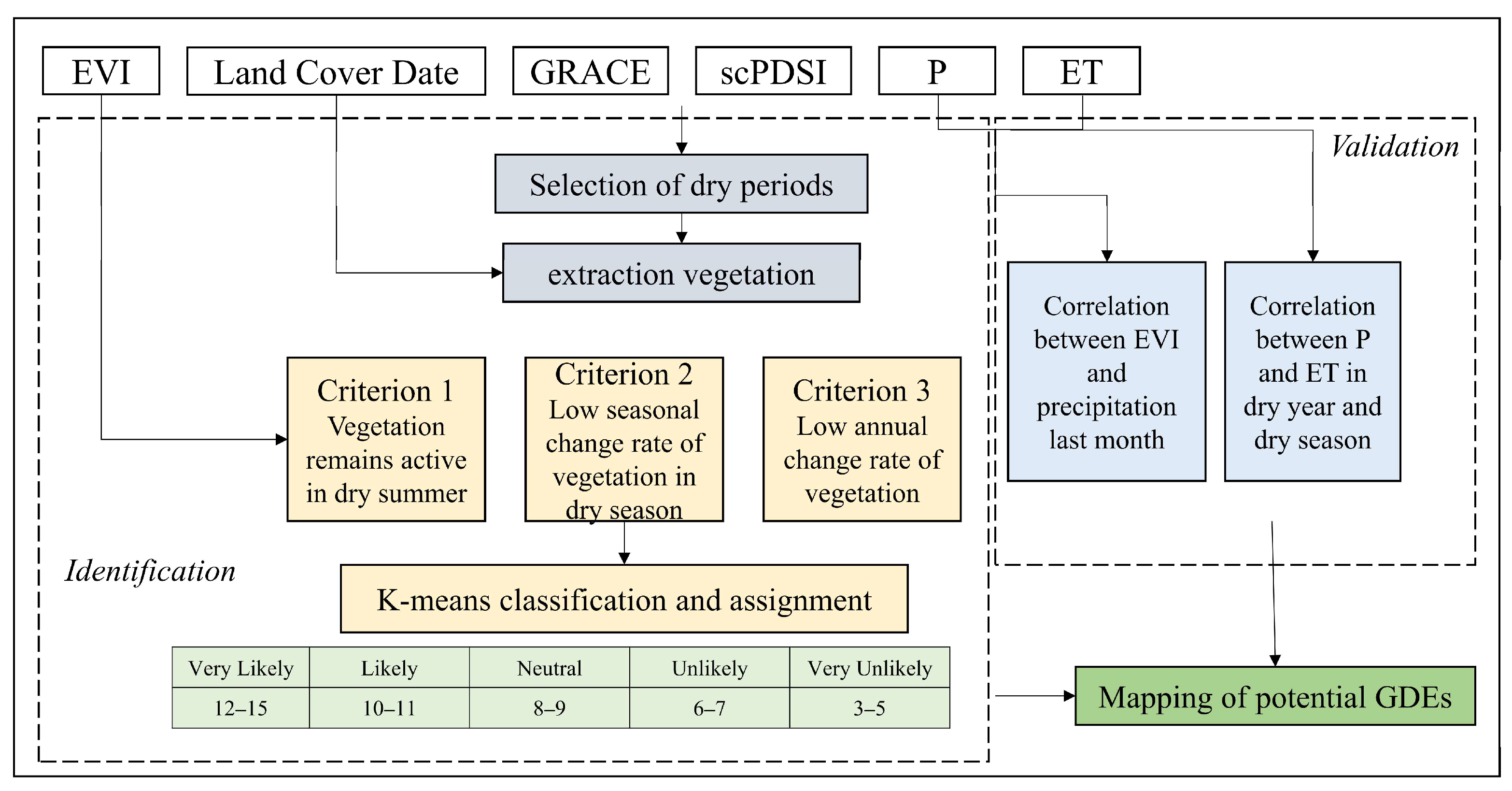
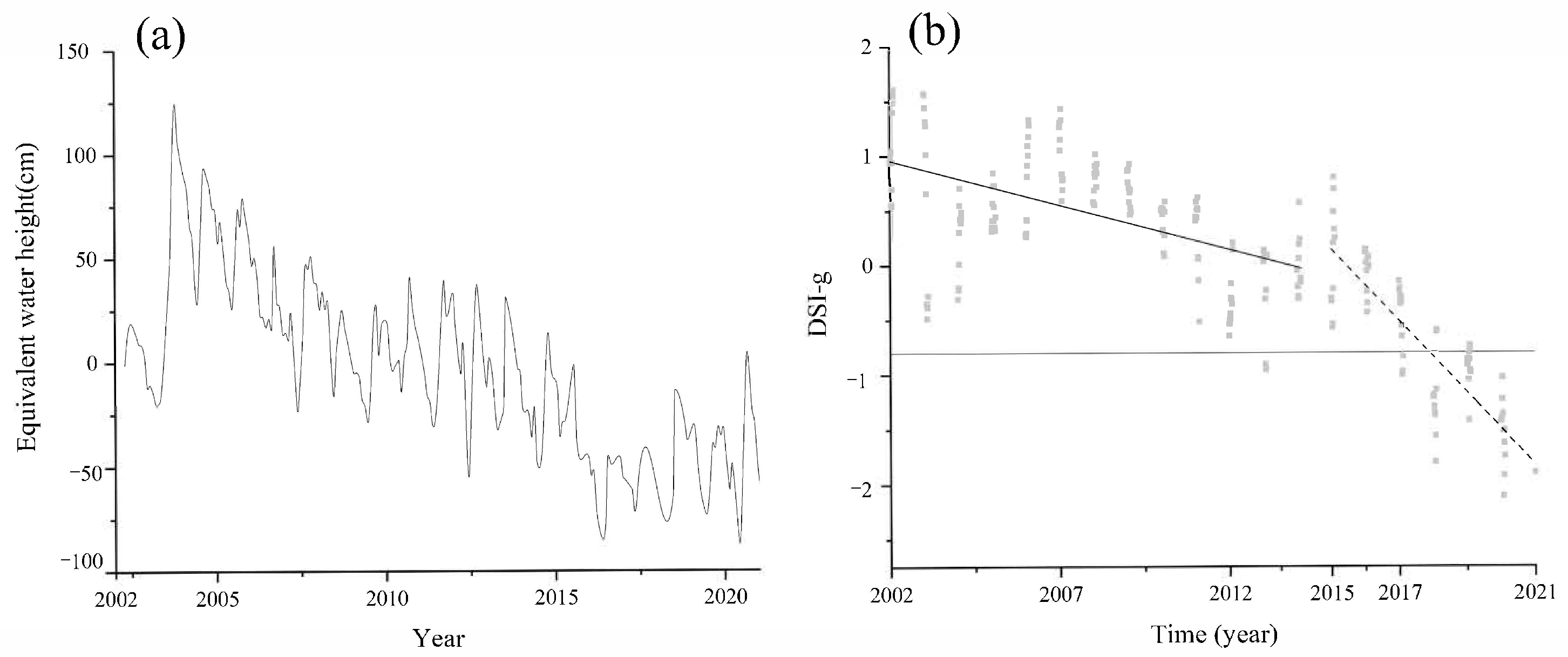

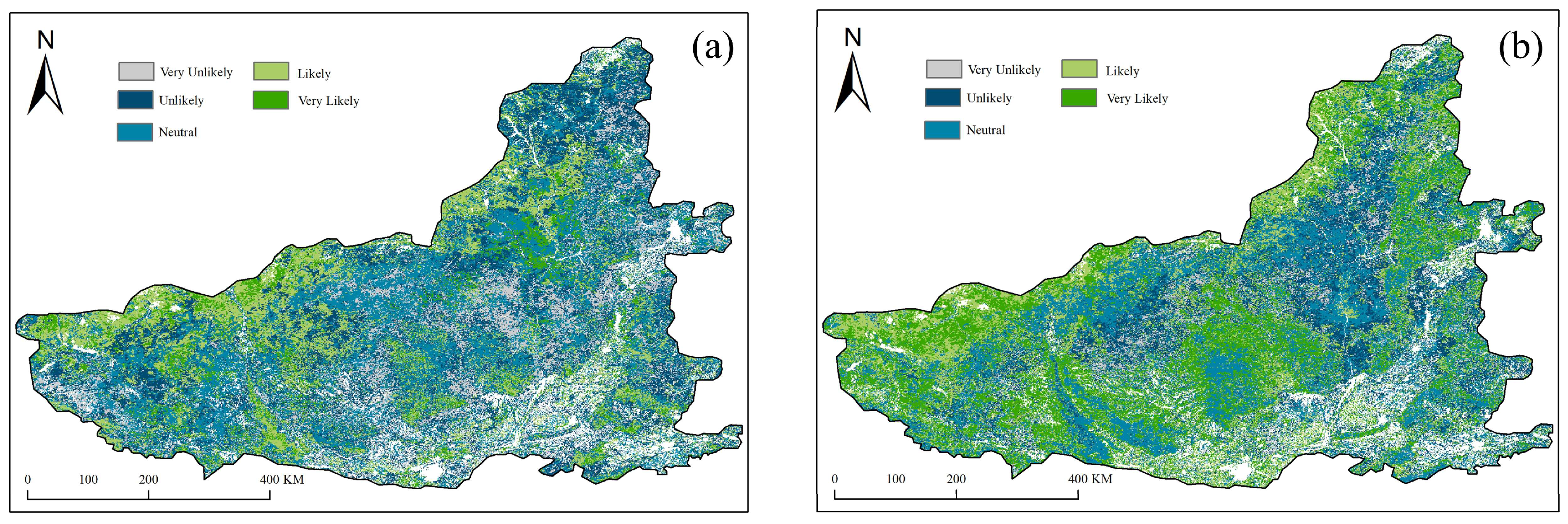
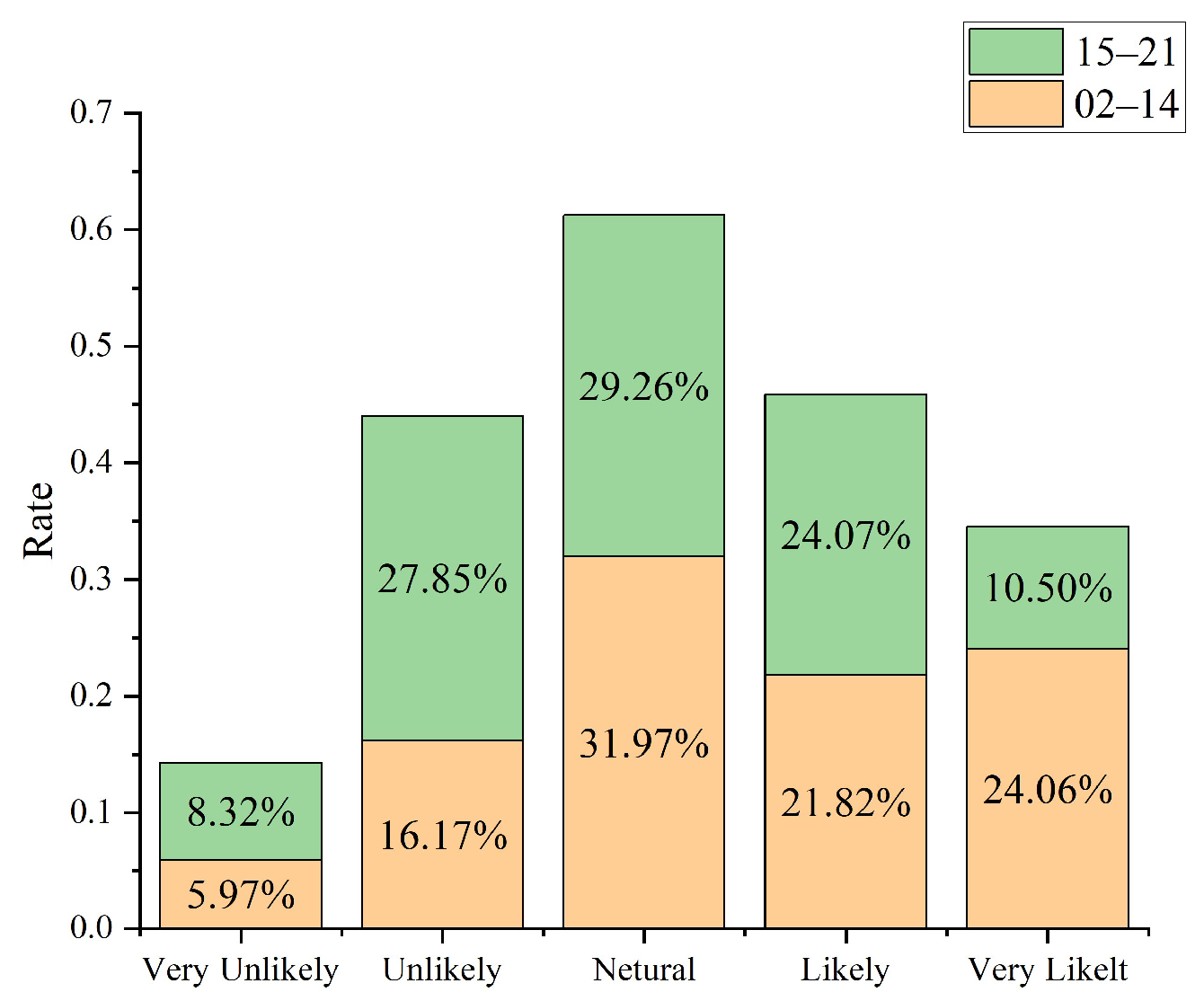

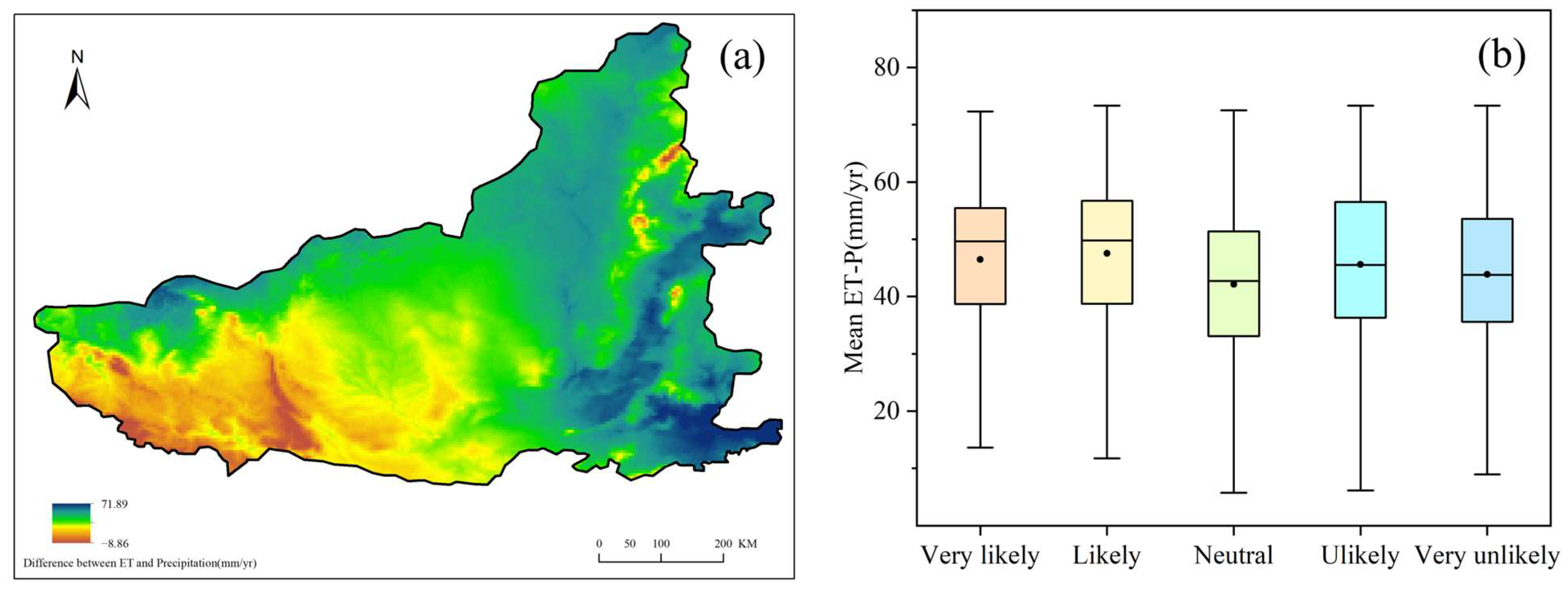

Disclaimer/Publisher’s Note: The statements, opinions and data contained in all publications are solely those of the individual author(s) and contributor(s) and not of MDPI and/or the editor(s). MDPI and/or the editor(s) disclaim responsibility for any injury to people or property resulting from any ideas, methods, instructions or products referred to in the content. |
© 2023 by the authors. Licensee MDPI, Basel, Switzerland. This article is an open access article distributed under the terms and conditions of the Creative Commons Attribution (CC BY) license (https://creativecommons.org/licenses/by/4.0/).
Share and Cite
Qiu, Y.; Wang, D.; Yu, X.; Jia, G.; Li, H. Effects of Groundwater Table Decline on Vegetation in Groundwater-Dependent Ecosystems. Forests 2023, 14, 2326. https://doi.org/10.3390/f14122326
Qiu Y, Wang D, Yu X, Jia G, Li H. Effects of Groundwater Table Decline on Vegetation in Groundwater-Dependent Ecosystems. Forests. 2023; 14(12):2326. https://doi.org/10.3390/f14122326
Chicago/Turabian StyleQiu, Yunxiao, Dandan Wang, Xinxiao Yu, Guodong Jia, and Hanzhi Li. 2023. "Effects of Groundwater Table Decline on Vegetation in Groundwater-Dependent Ecosystems" Forests 14, no. 12: 2326. https://doi.org/10.3390/f14122326
APA StyleQiu, Y., Wang, D., Yu, X., Jia, G., & Li, H. (2023). Effects of Groundwater Table Decline on Vegetation in Groundwater-Dependent Ecosystems. Forests, 14(12), 2326. https://doi.org/10.3390/f14122326




